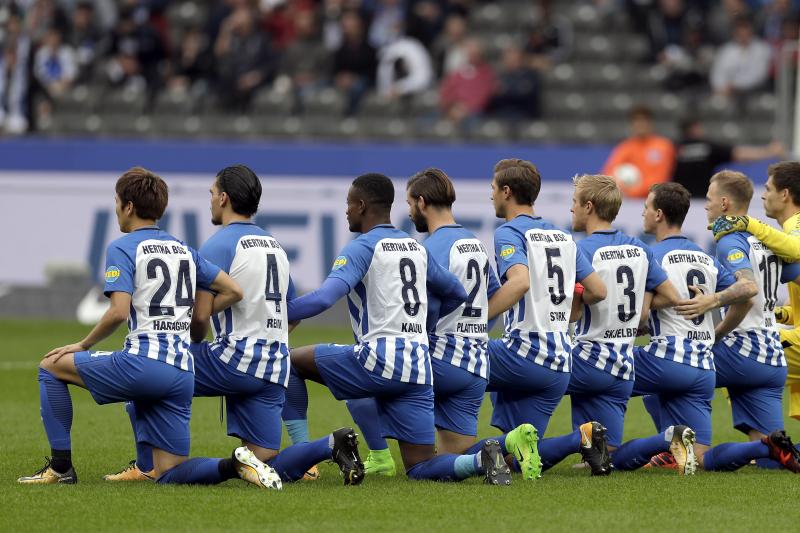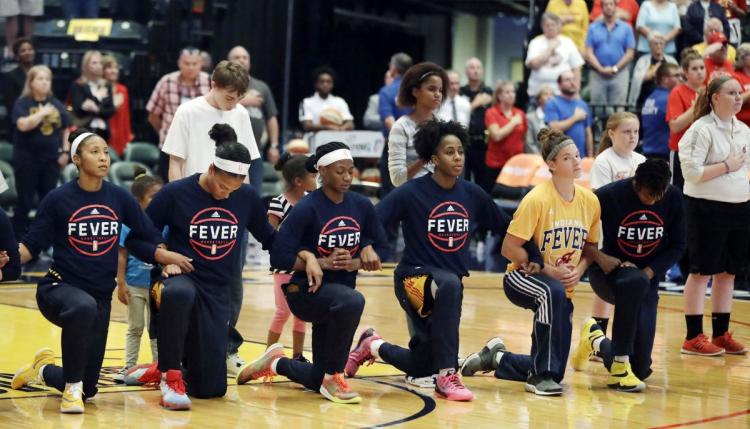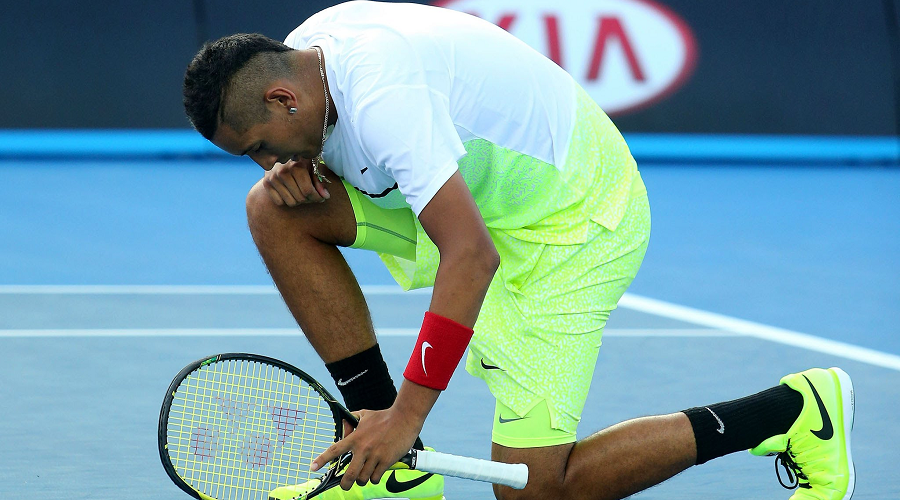On Tuesday, the NFL owners and representative players will meet to discuss the National Anthem protest that has been a driving issue this season – this as protest initiator and former San Francisco 49ers’ quarterback Colin Kaepernick filed a grievance against the NFL, saying the 32 owners colluded to keep him out of the league because of his activism.
A bit of background: “The Star-Spangled Banner” has been played before NFL games since at least 2009 at the behest of the U.S. Department of Defense, ostensibly to bolster recruiting. The NFL rulebook says that teams must be suited up and on the field before the Anthem begins, standing facing the flag, with their helmets in their left hands and their right hands over their hearts. In the third preseason game of 2016, a reporter noted Kaepernick sitting through the Anthem to protest police brutality against people of color.
Subsequently, a Green Beret suggested that Kaepernick kneel instead, a gesture of respect but also entreaty. Teammate Eric Reid followed suit.
Kaepernick’s play, however, had been declining since his high of leading the Niners in the 2014 Super Bowl, in which they lost to the Baltimore Ravens. Subsequently, he lost and won back the starting quarterback job, opting out of his contract in 2016. He has not surprisingly remained unemployed – on the field. Off it, he is distributing the $1 million he pledged to give to mostly small charities and lives quietly in New York, or as quietly as he can, working out in New Jersey.
Enter President Donald J. Trump, who has turned this into red meat for his base. First he called the protesters “sons of bitches” who should be fired for their unpatriotic actions. This led to a counter-protest in which players NFL players and beyond, like WNBA Fever players (pictured in navy), were kneeling and standing locked arms in solidarity and, let’s face it, defiance of Trump. None one to be one-upped, Trumpet then drafted Vice President Mike Pence and wife Karen into his theater of the absurd by instructing them to leave the Niners-Indianapolis Colts game should any players kneel. You can predict what happened.
Meanwhile, the kneeling protest has gone international with tennis star Nick Kyrgios (pictured with yellow) kneeling before a match and the German soccer team Hertha Berlin (pictured in baby blue stripes) kneeling in solidarity with the NFL. Clearly, the protest has morphed into something beyond Kaepernick’s original intent. But I don’t think that’s necessarily a bad thing.
Now the ball is in the owners’ end zone. Will they demand the players stand? Will some players continue to stand and deliver by kneeling? Will the players strike?
And what of Kaepernick: Does he have a collusion case? Probably, but how will he prove that 32 owners got together and agreed to blackball him? I think it’s virtually impossible.
When I think of him, I think not only of Rosa Parks, who ignited a movement in 1955 Alabama by refusing to obey a bus driver who ordered her to give up her seat to a white passenger. I also think of Curt Flood, the Kaepernick of his day pictured above in black and white. In 1969, the St. Louis Cardinals’ star centerfielder refused to be traded to the Philadelphia Phillies, challenging baseball’s reserve clause that bound a player to the will of a team for life. Flood’s suit went all the way to the U.S. Supreme Court where he lost. But though he lost the battle, he won the war, ushering in an era of free agency that continues today.
Still, he was blackballed from baseball. Off the field, he held a series of baseball-related jobs before he died of throat cancer at age 59 in 1997.
In his autobiography “The Way It Is,” he offered a chillingly realistic assessment of those bellwethers who lead the charge for a justice that may allude them. He expressed similar sentiments to Brad Snyder in his book “A Well-Paid Slave”:
“It would be difficult to come back. And besides, I don’t think I’ll be getting the opportunity to play again. As big as it is, baseball is a closely-knit unit. I doubt even one of the 24 men controlling the game would touch me with a 10-foot pole. You can’t buck the Establishment.”



